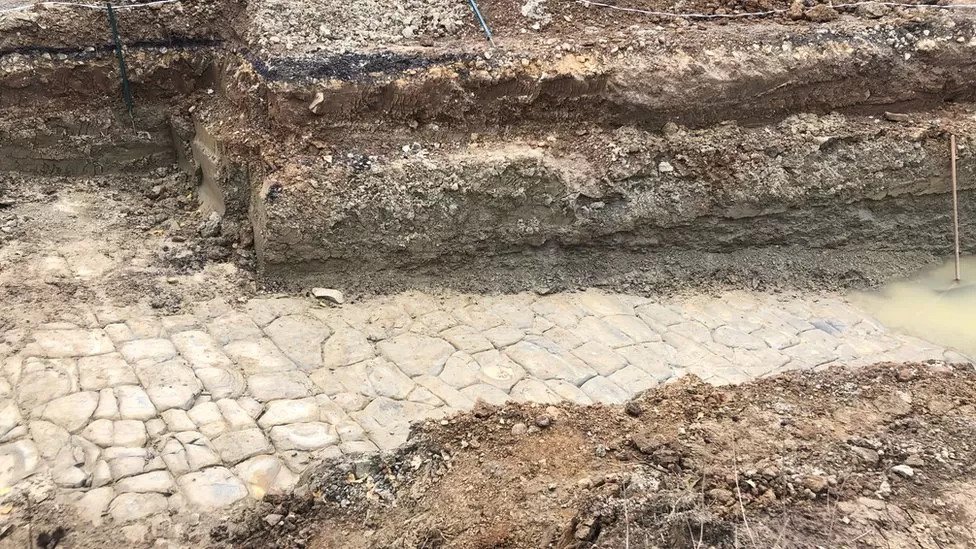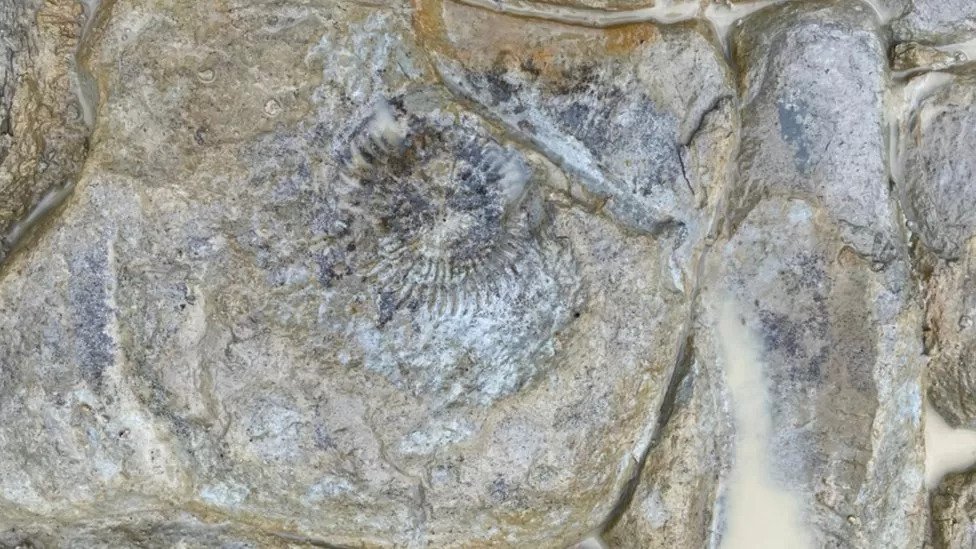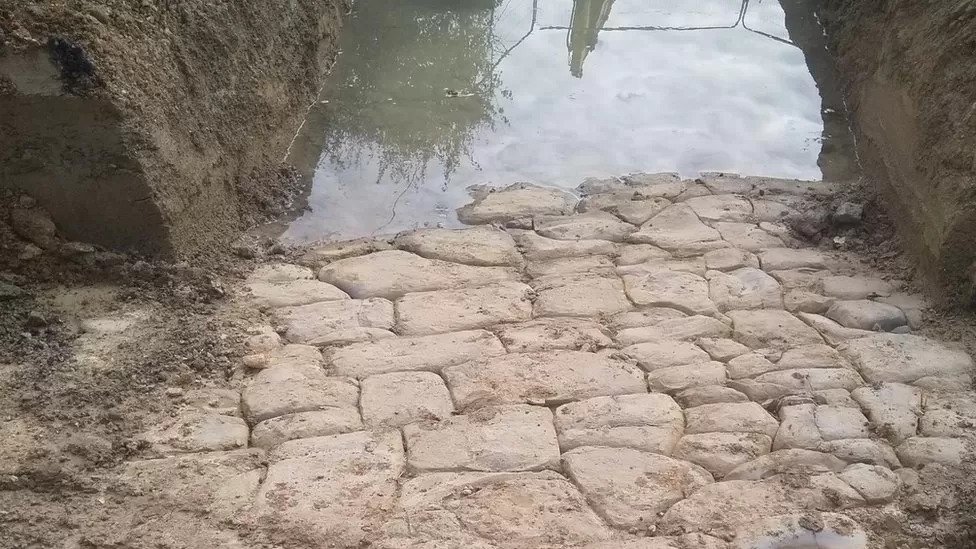Suspected Roman ford unearthed near Evesham during waterworks

Archaeologists say a cobbled ford uncovered near Evesham could be the finest Roman example of its type in Britain. The 10m-stretch, believed to extend to a depth of 3m, was discovered during routine waterworks by Severn Trent.
Aidan Smyth, archaeology officer from Wychavon District Council, said the discovery “took his breath away”.
If confirmed to originate from the first century AD, it would be “beyond rare”, he added.
A team from Historic England is expected to analyse the excavations.

The discovery, at an as yet undisclosed location, aligns with the dating of a nearby villa complex.
A spokesperson for Severn Trent Water said network improvement works were halted as soon as the ford was uncovered.
“Our teams… are working closely with Historic England, with representatives due to attend the site following further excavations,” they added.
Mr Smyth said the ford, which crosses a brook, carries marks to suggest it was used by carts.

“The stonework is absolutely perfect,” he said. “It just ticks every box for being Roman,” he said.
“When I came down to look at it, honestly, I thought it’s too good to be true.
“But then you look at the alluvium [a deposit of silt] that it’s filled up, so that hasn’t happened in one or two centuries. That’s taken millennia to be able to get that deep.
“The only place I can see similar when I was doing some research is in Pompeii. I can’t find anything else anywhere like that.”
Mr Smyth will work with a field archaeologist to dig a small area at the ford’s side on Monday for a typological assessment.
He is expecting to confirm its origin by the end of next week.
“If it is of a Roman date, it’s the only one of its kind in Britain,” he said.





